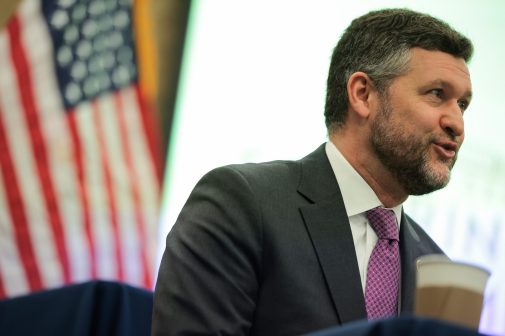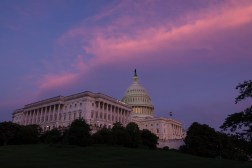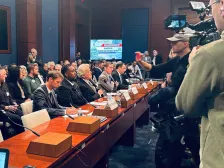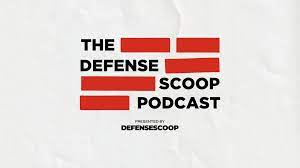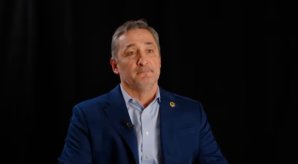UAP disclosure advocates call for expanded reforms in fiscal 2026 NDAA
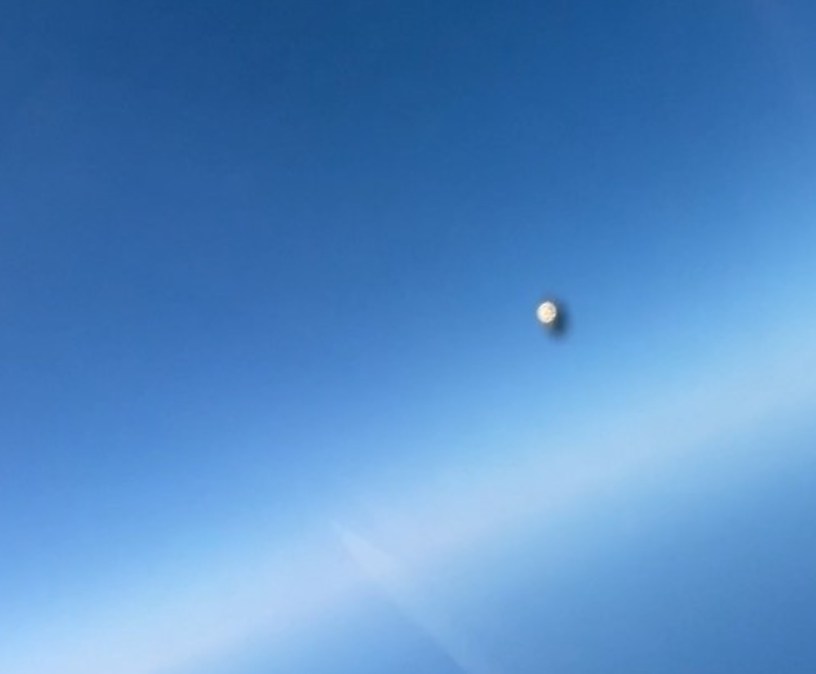
The Senate Armed Services Committee’s draft of the National Defense Authorization Act for fiscal 2026 includes three provisions that would impact the Pentagon’s anomalous threat investigations hub.
According to two former senior defense officials, the disclosure advocacy community welcomes those directives. However, they’re also calling for further policy changes to impel improved reporting and transparency from the government on unidentified anomalous phenomena — or UAP, the modernized term for UFOs and associated transmedium objects — that could threaten U.S. national security.
“More can — and should — always be done,” Christopher Mellon, former deputy assistant secretary of defense for intelligence, told DefenseScoop.
The legislative text targeting Defense Department and military-led efforts on UAP in the massive bill include:
- Sec. 1555 — to require briefings on UAP intercepts by North American Aerospace Defense Command and U.S. Northern Command
- Sec. 1556 — to require a consolidated security classification guidance matrix for programs relating to UAP
- Sec. 1561 — to require the consolidation of reporting requirements applicable to the Pentagon’s All Domain Anomaly Resolution Office (AARO)
In separate discussions last week, Mellon and a former senior military officer provided analyses of the NDAA and their latest recommendations to Congress in response to those proposals.
‘Low-hanging fruit’
The Pentagon has a storied but complicated history confronting technologies and craft that insiders have reported performing in ways that seem to transcend the capabilities of contemporary assets. At a high level, the DOD’s mechanisms to study what it now refers to as UAP have taken different forms over the decades.
The most recent iteration — known as the All-Domain Anomaly Resolution Office, or AARO — was officially launched under the Biden administration in 2022 to fulfill a mandate in that year’s NDAA.
The office achieved full operational capacity in 2024. Although its establishment largely stemmed from mounting calls for Pentagon transparency on UAP, government officials have been mostly secretive about AARO’s projects and caseload of dozens of open investigations.
Still, AARO’s responsibilities have expanded as the organization matures, and particularly as it has been charged with helping the department resolve the recent uptick of mysterious drone incursions at military bases and other sensitive national security sites.
Building on those tasks, the Senate Armed Services Committee’s NDAA draft includes requirements that would require Northcom and NORAD to alert AARO and Congress about any time they intercept a potential UAP.
Mellon — a longtime UAP transparency proponent who served as deputy assistant secretary of defense during the Clinton and Bush administrations, and later, an influential Senate staff member — said he’s been advocating for such a directive for years.
“NORAD’s historical failure to inform AARO of UAP incidents is inconsistent with the intent of Congress when AARO was created as the central repository and conduit to Congress for all UAP data in the U.S. government. Currently, by the time AARO learns of these intercepts — if it does at all — NORAD’s critical sensor data is often no longer available. But Congress clearly needs this information to determine, among other things, how effective the U.S. air surveillance network is,” he said.
He said this section would mark a “welcome step” towards oversight, if passed. But in his view, more needs to be done.
“In many cases, for instance, Navy ships report UAP sightings from areas where Air Force radars and aircraft operate but, strangely, these systems appear to report no UAP. At the same time, many official UAP reports refer to U.S. fighters chasing UAP over or near the continental United States … Where is that data? If the Air Force fully and properly reported to AARO, then Congress — and the American people — may even learn of UAP in space or in orbit,” Mellon said. “At a time of rapid advancements in drone and aerospace technology for America’s adversaries, better domain awareness, including in the space domain, is critical for ensuring the nation’s security.”
Elsewhere in the legislation is a provision that would result in a consolidation of all the disparate reporting requirements applicable to AARO.
“While we appreciate that the [Intelligence Community] and Pentagon often face redundant reporting requirements to Congress, the matter of UAP — where Congress has only lately begun to extend its oversight — is not one of those areas,” Mellon said.
He also raised concerns about one change to an existing law that currently requires all UAP data to be delivered “immediately” to AARO.
“The proposed provision appears to restrict AARO’s now-immediate access right by requiring UAP data to be delivered to it ‘in a manner that protects intelligence sources and methods.’ But who makes that determination? AARO is independently empowered elsewhere by statute to receive all UAP data and should retain unfettered access to it. It knows how to protect intelligence sources and methods. There should not be provisions of this sort that could be interpreted to create impediments to AARO’s access rights under law,” Mellon said.
Beyond those inclusions, the bill would require AARO to issue a consolidated security classification guide relating to UAP investigations and events.
“Since I provided historic gun camera footage of Navy warplane encounters with UAP incidents to The New York Times and The Washington Post in 2017, the release of additional footage by the government has all but stopped. In fact, shortly after that footage was aired, the Pentagon cloaked under order of secrecy virtually everything about its UAP investigation,” Mellon noted. “That was wrong, and it’s past time for the current draconian classification guide to change.”
At the same time, even if the requirement passes and a new declassification guide were enacted, he said AARO would still retain ample discretion to keep many UAP records from the public. So instead, Mellon suggested, the office should be mandated by law to routinely submit unclassified videos through the Defense Office of Prepublication and Security Review for secure dissemination.
“Despite the earlier pledge to Congress by the Department of the Navy to release more records, it appears that the Pentagon, AARO, and the IC don’t view Congress and the public as having a legitimate ‘need to know’ about the wealth of UAP footage the government has within its clasp. That is low-hanging fruit for Congress to fix,” Mellon said.
‘The big picture’
Retired Navy Rear Adm. Timothy Gallaudet previously led Naval Meteorology and Oceanography Command and served as Oceanographer of the Navy. He deployed on multiple tours afloat during his career in uniform, and later served as the Senate-confirmed assistant secretary of commerce for oceans and atmosphere after retiring from the military in 2017, during the first Trump administration.
During his retirement, Gallaudet has opened up about his experiences on active duty observing now-verified video footage of UAP and unidentified submerged objects (USO) captured by colleagues — and his efforts to help destigmatize this previously taboo topic across the U.S. military.
When asked about his views on the UAP inclusions in the NDAA legislation, Gallaudet pointed to the UAP Disclosure Act (UAPDA), which was first introduced in 2023. That bill has seen continued support in the Senate, but has not been passed to date. It seeks to enable much deeper congressional oversight on UAP-related activities and operations.
“In my opinion, these UAP provisions are all good individually, but the bigger picture is that they dilute, distract, and compete with the authorities and priority of the UAP review board in the UAPDA. I do not think the fragmented approach which they represent is the best path forward, and what is needed is a whole of government approach that the UAPDA will bring us closer to,” Gallaudet told DefenseScoop.
Mellon also mentioned the UAPDA in a separate discussion, noting that the UAP Disclosure Fund — a civil society organization dedicated to protecting whistleblowers and promoting government accountability, on which he serves as chairman of the board — fully supports its passage.
“We hope to see that transparency measure included in the next version of the NDAA by way of a manager’s amendment on the Senate floor. We also hope that the House takes commensurate action to ensure that this vital legislation is enacted into binding law,” Mellon said.
He partnered with two other members of the UAPDF’s leadership team, Hunt Willis and Kirk McConnell, to co-author an upcoming policy brief for Congress, policymakers and potential whistleblowers that addresses a misperception they’ve encountered among possible sources of confidential information that they can’t disclose classified details to Congress behind closed doors.
Notably, Rep. Eric Burlison (R-MO) recently expressed frustration at the hesitancy of potential witnesses to step forward as the House Oversight Committee’s task force plans for hearings in the coming months.
The new policy brief, viewed by DefenseScoop ahead of its publication, spotlights legal reasons to demonstrate that lawmakers are “fully authorized to receive classified information and endowed with a clear ‘need to know’ given their oversight responsibilities.”
More broadly, regarding the proposals that have made it into the fiscal 2026 NDAA draft so far, Mellon noted that the UAPDF’s hope is that they’ll help to pave the way for a virtuous cycle, where “more information leads to greater understanding of, and interest in, UAP, impelling further legislation to obtain the release of still more UAP information.”
“This cycle will help to build consensus across Congress — not within a few pockets of a few committees — for broader reforms in this centrally important issue, leading to greater transparency for the American people,” Mellon said.
